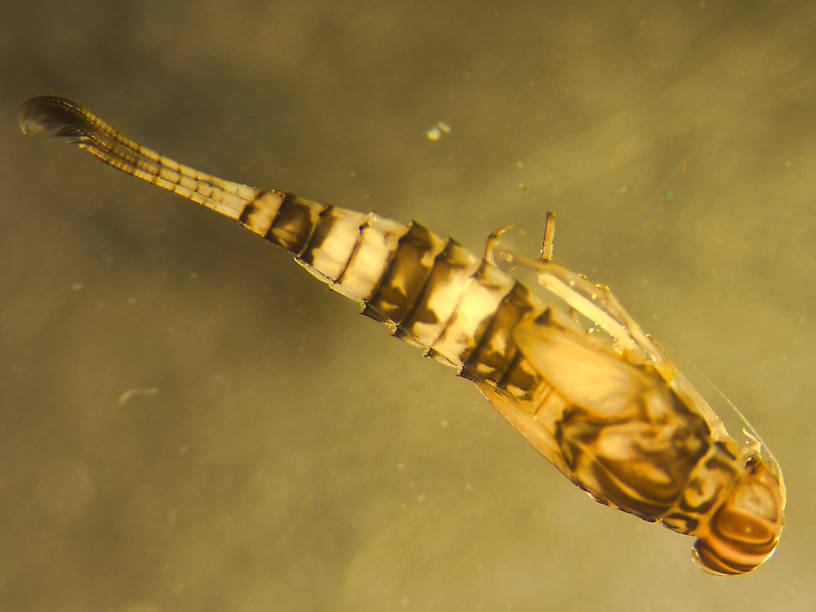
Blue-winged Olives
Baetis
Tiny Baetis mayflies are perhaps the most commonly encountered and imitated by anglers on all American trout streams due to their great abundance, widespread distribution, and trout-friendly emergence habits.


Mayfly Species Procloeon pennulatum (Tiny Sulphur Duns)
Species Range
Physical description
Most physical descriptions on Troutnut are direct or slightly edited quotes from the original scientific sources describing or updating the species, although there may be errors in copying them to this website. Such descriptions aren't always definitive, because species often turn out to be more variable than the original describers observed. In some cases, only a single specimen was described! However, they are useful starting points.
Female Spinner
Wing length: 8 mm
A large species, of which only the female imago is known; distinctive by reason of the prominent ruddy dorsal stripe and large size.
Thorax of female light ochreous, shaded with creamy. Legs pale yellow. Wings hyaline, venation pale. Hind wing long and very narrow; two longitudinal veins, united for a short distance at the base, then running close to each other to beyond the costal projection, which is long and hook-like. Abdomen pale yellowish; last three segments opaque, others semi-hyaline. A broad and prominent ruddy stripe extends the entire length of the abdomen dorsally, deepest in color on tergites 7-9, and containing two pairs of minute hyaline submedian dots.
This species is apparently related to C. quaesitum (now a synonym of Procloeon quaesitum), but the female of that species has a pale yellowish abdomen, the posterior margins of the tergites tinged with brown.
Specimens of the Mayfly Species Procloeon pennulatum
1 Nymph

Start a Discussion of Procloeon pennulatum
References
- Needham, James G., Jay R. Traver, and Yin-Chi Hsu. 1935. The Biology of Mayflies. Comstock Publishing Company, Inc.
Mayfly Species Procloeon pennulatum (Tiny Sulphur Duns)
Species Range
Common Name
Resources
- NatureServe
- Integrated Taxonomic Information System
- Global Biodiversity Information Facility
- Described by Eaton (1870)

